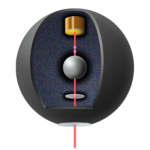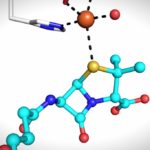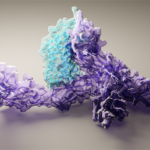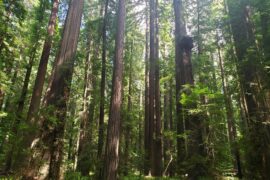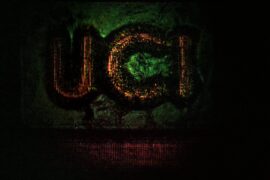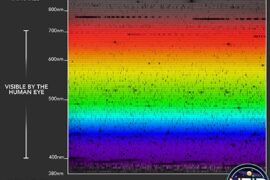Researchers at Berkeley Lab and the National Institute of Standards and Technology have proposed an experiment that may settle the persistent question: Is gravity truly a quantum force?
Latest News
Enzyme Action Movie Shows How Nature Makes Penicillins
This video shows steps of the enzymatic reaction that makes a double-ringed molecule, which is the structural starting point to produce molecules in a large class of antibiotics. (Credit: Patrick Rabe/Oxford University) Scientists who specialize in studying the atom-by-atom choreography of enzymes have revealed new insights into the function of isopenicillin N synthase, an
AI-Fueled Software Reveals Accurate Protein Structure Prediction
By Ashleigh Papp “The dream of predicting a protein shape just from its gene sequence is now a reality,” said Paul Adams, Associate Laboratory Director for Biosciences at Berkeley Lab. For Adams and other structural biologists who study proteins, predicting their shape offers a key to understanding their function and accelerating treatments for diseases like
This Exotic Particle Had an Out-of-Body Experience; These Scientists Took a Picture of It
Scientists at Berkeley Lab and UC Berkeley have taken the clearest picture yet of electronic particles that make up a mysterious magnetic state called quantum spin liquid. The achievement could facilitate the development of superfast quantum computers and energy-efficient superconductors.
California’s carbon mitigation efforts may be thwarted by climate change itself
UCI study: Higher heat will limit ecosystem’s role in removing atmospheric CO2
UCI scientists make X-ray vision-like camera to rapidly retrieve 3D images
Tech can visualize various materials, structures with detailed chemical information
Astronomers begin scientific mission with NEID spectrometer
UCI scientists will use instrument to detect and classify exoplanets
Main Attraction: Scientists Create World’s Thinnest Magnet
Scientists at Berkeley Lab and UC Berkeley have created a one-atom thin magnet that operates at room temperature. The ultrathin magnet could lead to new applications in computing and electronics, and new tools for the study of quantum physics.
Climate change is driving plant die-offs in Southern California, UCI study finds
Loss of vegetation cover is most stark in desert ecosystems already on edge of habitability


